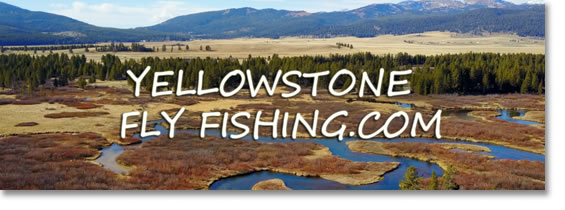 |
|
|
Yellowstone Lake Report As we mentioned in our Award Winning DVD - Fly Fishing Yellowstone Hatches, Yellowstone Lake is one of the top 2 Callibaetis lakes in the country. This makes it high on the list for dry fly enthusiasts. This years Callibaetis season is in full emergence. You can expect this premier hatch to endure from mid-July to the end of August. The difference between this Callibaetis hatch and most normal lakes is the depth of the weed beds. Yellowstone Lake is the largest high altitude freshwater lake and its weedbeds are typically deeper than most normal sized stillwater fisheries. Yellowstone Lake is the best sight fishing lake in the country. What makes Yellowstone Lake unique is it's amenable cutthroat. These Yellowstone Lake cutthroat will rise as much as 6 feet out of their way to take your Callibaetis imitation - all in slow motion cinemacolor. . Your best access is just north of West Thumb Geyser Basin to Mary Bay. The best patterns are Callibaetis duns, emergers and nymphs. Spinners on Yellowstone Lake, though they will work, are not as critical as on Hebgen Lake. Callibaetis Sparkle Duns and a Hebgen Callibaetis nymph are deadly. Shoreline activity is best during the early season from mid July to early August. Emergence begins around noon and can last till 4:00 pm. Critical to sight fishing success is sunny skies and a calm lake. For anglers that prefer quantity over quality, sinking lines tagged with buggers will produce numbers for you. Nymph fishers that don't mind blind fishing can fish Callibaetis nymphs all day long in most weather conditions. For this type of fishing all you need is a float tube or pontoon boat and cast and strip - its a no brainer and you certainly don't need a guide. One other comment I must make about the Yellowstone cutthroat fishery. After many years of fishing Yellowstone Lake during the Callibaetis season, I have noticed a disturbing occurrence. Sure the Mackinaw have made a significant mortality rate on the cutthroat population and the park service is doing a great job is trying to reduce the lake trout threat, however I have a suspicion they have been around longer than "first discovered". All of the tributaries to Yellowstone Lake are critical spawning habitat to the native cutthroats. Without this access they will not spawn from the tributary source from which they were produced. During late May and June around many of these tributaries, especially during drought years, you will find schools of cutthroat trying to access these dammed tributaries with no success. What I have noticed is the smaller tributaries to Yellowstone Lake have become naturally dammed with sediment from fires and other natural occurrences. Each year, near the mouths of these tributaries, the numbers of cutthroat have noticeably decreased. My fear is that eventually, these small tributaries will no longer have any cutthroat critical to the entire wildlife ecosystem. I am a firm believer in letting nature take its course but in this case waiting for a 99 year flood to "scour out" these unnatural gravel bars may spell more doom than the Mackinaw can ever make. Would it be too much to ask the park service to recruit some volunteers with shovels and remove these gravel dams? - Hopefully the park service will address this issue soon instead of coming out with a "lets kill all non-native species plan"- |